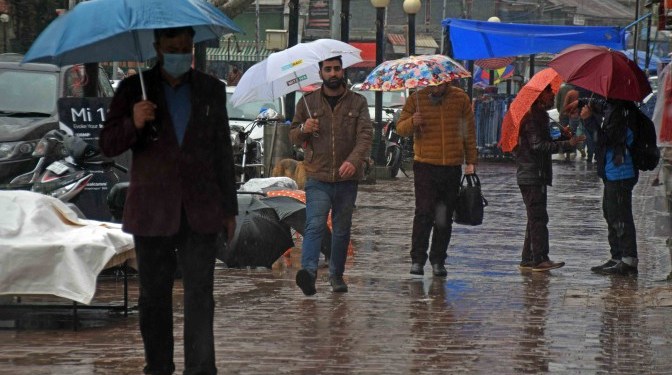Second powerful earthquake hits Turkey hours after over 1,200 killed

The most powerful earthquake in nearly a century struck Turkey and Syria early Monday, killing over 1,200 people in their sleep, levelling buildings and causing tremors felt as far away as Iraq.
Another 7.5-magnitude earthquake hit southeast Turkey this evening, according to the United States Geological Survey (USGS). Details of casualties in the second earthquake are yet to come in.
The second shallow quake hit at 1:24 pm local time, 4 km south-southeast of the town of Ekinozu.
The first 7.8-magnitude quake wiped out entire sections of major Turkish cities in a restless region filled with millions of people who have fled the civil war in Syria and other conflicts.
The head of Syria’s National Earthquake Centre, Raed Ahmed, told pro-government radio that this was “the biggest earthquake recorded in the history of the centre”.
At least 326 people died in government-controlled parts of Syria, according to the latest count.
At least 912 people also died in Turkey, Turkish President Recep Tayyip Erdogan said.
Shocked survivors in Turkey rushed out into the snow-covered streets in their pyjamas, watching rescuers dig through the debris of damaged homes with their hands.
“Seven members of my family are under the debris,” Muhittin Orakci, a stunned survivor in Turkey’s mostly Kurdish city of Diyarbakir, told AFP.
The Danish Geological Institute said the tremors of the earthquake were felt as far away as Greenland.
“My sister and her three children are there. And also her husband, her father-in-law and her mother-in-law.”
The rescue was being hampered by a winter blizzard that covered major roads in ice and snow. Officials said the quake made three major airports in the area inoperable, further complicating deliveries of vital aid.
The quake struck at 04:17 am (0117 GMT) at a depth of about 17.9 kilometres (11 miles) near the Turkish city of Gaziantep, which is home to around two million people, the US Geological Survey said.
Turkey’s AFAD emergencies service centre put the quake’s magnitude at 7.7, updating an initial estimate of 7.4.
Turkish President Recep Tayyip Erdogan, who will be under intense pressure to oversee an effective response to the disaster heading to a tightly-contested May 14 election, conveyed his sympathies and urged national unity.
“We hope that we will get through this disaster together as soon as possible and with the least damage,” the Turkish leader tweeted.
Washington, the European Union, and Russian all immediately sent condolences and offers of help.
Turkey also received a message of support from its historic rival Greece, whose relations with Ankara have suffered from a spate of border and cultural disputes.
Ukrainian President Volodymyr Zelensky offered to provide “the necessary assistance” to Turkey, whose combat drones are helping Kyiv fight the Russian invasion.
And Iran, which together with Russia is trying to help Ankara restore its relations with Damascus following its efforts to help oust Syrian President Bashar al-Assad, sent separate messages of condolence to both sides.
Images on Turkish television showed rescuers digging through rubble across city centres and residential neighbourhoods of almost all the big cities running along the border with Syria.
Some of the heaviest devastation occurred near the quake’s epicentre between Kahramanmaras and Gaziantep, where entire city blocks lay in ruins under the gathering snow.
Kahramanmaras Governor Omer Faruk Coskun said it was too early to estimate the death count because so many buildings were destroyed.
“It is not possible to give the number of dead and injured at the moment because so many buildings have been destroyed,” Coskun said. “The damage is serious.”
A famous mosque dating back to the 13th century partially collapsed in the province of Maltaya, where a 14-story building with 28 apartments housed 92 people also collapsed.
In other cities, social media posts showed a 2,200-year-old hilltop castle built by Roman armies in Gaziantep lying in ruins, its walls partially turned to rubble.
“We hear voices here — and over there, too,” one rescuer was overheard as saying on NTV television in front of a flattened building in the city of Diyarbakir.
“There may be 200 people under the rubble.”
The Syrian health ministry reported damage across the provinces of Aleppo, Latakia, Hama and Tartus, where Russia is leasing a naval facility.
AFP correspondents in northern Syria said terrified residents ran out of their homes after the ground shook.
Even before the tragedy, buildings in Aleppo, Syria’s pre-war commercial hub, often collapsed due to the dilapidated infrastructure, which has suffered from lack of war-time oversight.
Naci Gorur, an earthquake expert with Turkey’s Academy of Sciences, urged local officials to immediately check the region’s dams for cracks to avert potentially catastrophic flooding.
Officials cut off natural gas and power supplies across the region as a precaution, also closing shools for two weeks.
“The size of the aftershocks, which may continue for days although mostly decreasing in energy, brings a risk of collapse of structures already weakened by the earlier events,” David Rothery, an earthquake expert at the Open University in Britain.
“This makes search and rescue efforts dangerous.”
Turkey is in one of the world’s most active earthquake zones.
The Turkish region of Duzce suffered a 7.4-magnitude earthquake in 1999, when more than 17,000 people died –including about 1,000 in Istanbul.
Experts have long warned a large quake could devastate Istanbul, a megalopolis of 16 million people filled with rickety homes.
The last 7.8-magnitude tremor shook Turkey in 1939, when 33,000 died in the eastern Erzincan province.






